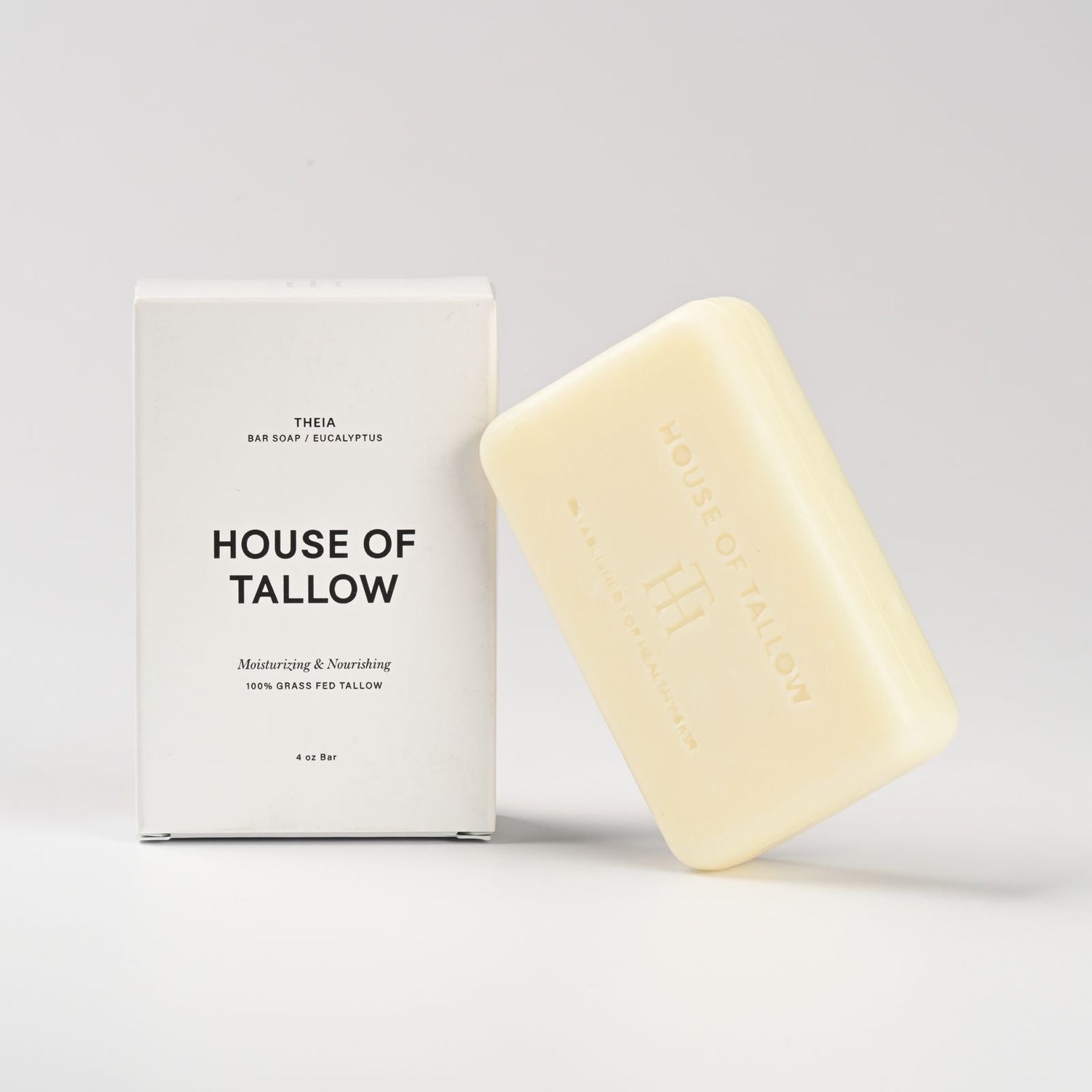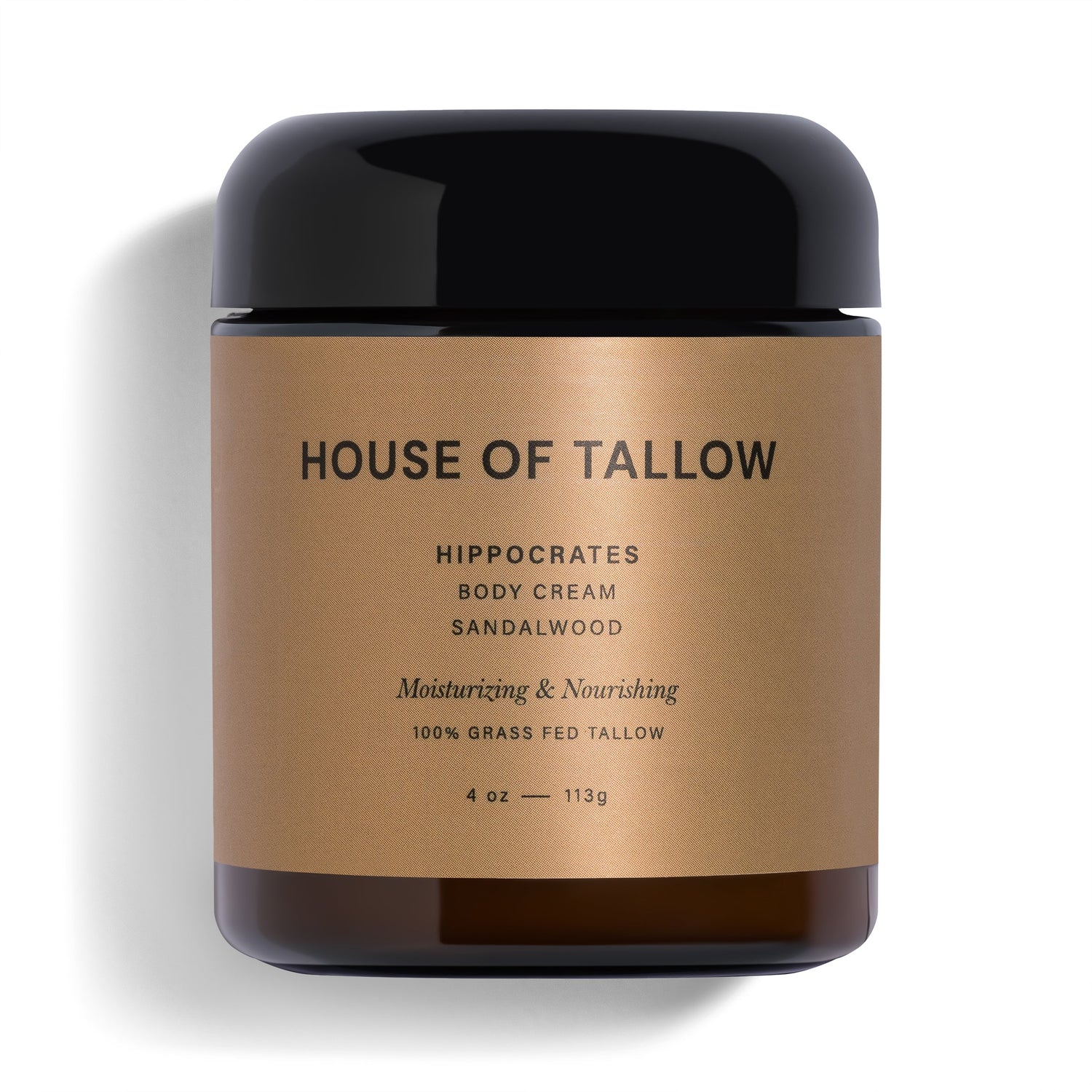Looking for the best natural skincare ingredients? Here’s a quick guide to help you decide between plant oils and animal fats like tallow. Both offer unique benefits for hydration, skin repair, and addressing specific concerns like acne or dryness. Here’s what you need to know:
- Plant Oils: Derived from seeds or plants (e.g., jojoba, argan). Rich in antioxidants and fatty acids, great for hydration and reducing inflammation.
- Animal Fats (Tallow): A byproduct of the meat industry, mimics human skin’s natural oils, deeply nourishes, and contains vitamins A, D, E, and K.
Quick Comparison Table:
| Factor | Plant Oils | Animal Fats (Tallow) |
|---|---|---|
| Source | Plants and seeds | Byproduct of animals |
| Best For | Acne-prone, oily skin | Dry, sensitive skin |
| Absorption | Varies (e.g., jojoba absorbs quickly) | Mimics skin’s natural oils |
| Sustainability | Renewable resources | Reduces waste |
| Shelf Life | Shorter, prone to oxidation | Naturally long-lasting |
Choose based on your skin needs, values, and environmental priorities. Both options can work wonders if used correctly!
Differences Between Plant Oils and Animal Fats
Nutrient Content and Fatty Acids
Plant oils and animal fats have distinct nutritional profiles, each offering unique skincare benefits. Plant oils are rich in fatty acids like linoleic (great for hydration) and oleic (helps repair the skin barrier), which are key to maintaining healthy skin [2]. For example, argan oil is packed with antioxidants and vitamin E. On the other hand, tallow contains a wider range of vitamins - A, D, E, and K - which are harder to find in plant-based oils.
Tallow’s natural mix of these vitamins makes it especially effective for skin repair and maintenance. Its composition is also similar to human cell structure, which boosts its ability to support skin health.
But it’s not just about nutrients - how these ingredients interact with your skin matters too.
How They Absorb and Work with Skin
The way these ingredients absorb into the skin differs significantly. Tallow closely mimics human sebum, meaning it absorbs easily, provides deep hydration, and doesn’t leave a greasy finish [2].
Plant oils, on the other hand, vary in their absorption rates. For instance, jojoba oil is highly absorbent because its structure is similar to human sebum. Others, like olive oil, tend to sit on the skin’s surface, forming a barrier. Here’s a quick look at how some popular options perform:
| Ingredient | Absorption | Best For |
|---|---|---|
| Jojoba | Very High | Oily skin, lightweight hydration |
| Argan | Medium-High | Dry, mature skin |
| Tallow | Very High | Deep nourishment for all skin types |
| Olive | Medium | Dry, sensitive skin |
Absorption is important, but don’t overlook shelf life and stability when choosing skincare ingredients.
Shelf Life and Stability
Tallow is naturally resistant to oxidation, giving it a long shelf life and reducing the need for preservatives [2]. Plant oils, however, are more prone to oxidation, which means they often require added preservatives. Some exceptions, like jojoba oil, are naturally stable due to their unique structure. Keep in mind that products with multiple plant oils may need extra care in storage and often have shorter expiration dates compared to tallow-based products.
"Natural oils nourish, smoothen, soothe, and clean the skin. Skin nourishment is provided by biologically active ingredients in natural oils such as antioxidants and essential fatty acids." [1]
How They Address Skin Concerns
Hydrating Dry Skin
Plant oils and animal fats take different paths to hydrate the skin. Tallow stands out because its structure closely resembles human skin cells, allowing it to deeply hydrate and nourish. Packed with vitamins A, D, E, and K, it provides intense hydration that goes beyond the surface.
On the other hand, plant oils like olive and coconut work by forming a barrier on the skin's surface while delivering fatty acids to aid in skin repair. The main distinction? Tallow penetrates deeply, whereas plant oils often remain more surface-focused, though this can vary depending on the specific oil.
Calming Eczema and Psoriasis
When it comes to inflammatory skin conditions, both options bring something to the table. Certain plant oils, like borage and evening primrose, are rich in gamma-linolenic acid (GLA), which helps reduce inflammation and soothe irritation [2]. Tallow, with its anti-inflammatory properties and vitamin-rich profile, is another gentle yet effective option for healing damaged or inflamed skin.
| Ingredient | Best For | Key Benefits |
|---|---|---|
| Borage Oil | Eczema | High GLA content, reduces inflammation |
| Evening Primrose | Psoriasis | Anti-inflammatory, supports skin barrier |
| Tallow | Both conditions | Deep hydration, packed with vitamins |
Helping Acne-Prone Skin
Choosing between plant oils and tallow for acne-prone skin depends on individual needs. Non-comedogenic plant oils like jojoba and tea tree are popular choices. Jojoba mimics the skin’s natural oils, helping to regulate sebum production, while tea tree oil fights acne-causing bacteria with its antimicrobial properties [2][4].
Tallow can also be a good option. Its anti-inflammatory properties help calm irritated, acne-prone skin without clogging pores. To avoid potential issues, start with small amounts of either product to see how your skin reacts. With consistent use, both can support healthier skin.
While both plant oils and tallow can address these skin concerns effectively, it’s worth thinking about their sourcing and impact on the environment as part of your decision-making process.
sbb-itb-a1b9fc0
Ethics and Environmental Impact
Sourcing and Environmental Impact
The environmental impact of skincare ingredients can differ greatly depending on their source. For example, palm oil production has led to major deforestation and habitat loss, particularly in Southeast Asia [5]. These effects highlight the importance of choosing ingredients that match your skincare needs and your personal values.
Tallow, derived as a byproduct of the meat industry, helps reduce waste by repurposing materials that might otherwise go unused. Brands like House of Tallow focus on this aspect by sourcing their tallow from grass-fed cattle operations.
"The beauty industry has a significant impact on the environment, and it's up to us to make conscious choices about the products we use and the companies we support." - Lorraine Dallmeier, Director of Formula Botanica [6]
Certain plant oils, such as jojoba and argan, tend to have a smaller environmental footprint, requiring less water and land. However, large-scale farming of these oils can still lead to environmental damage [3]. Beyond their ecological impact, ethical concerns also play a major role in ingredient selection.
Ethics and Reducing Waste
Tallow, while derived from animals, contributes to sustainability by cutting down on waste. That said, its use does raise concerns about animal welfare. Plant oils, on the other hand, come with their own ethical challenges, particularly around labor practices. For instance, the production of argan oil has faced criticism for exploitative labor conditions [2].
| Ingredient Type | Ethical Considerations | Waste Reduction Potential |
|---|---|---|
| Tallow | Raises animal welfare concerns but reduces waste | High - repurposes byproducts from the meat industry |
| Plant Oils | Labor rights and fair trade issues | Medium - varies by production methods |
| Sustainable Plant Oils (e.g., Jojoba) | Often certified fair trade, better working conditions | Medium-High - requires dedicated farming |
Many brands now provide greater transparency, offering certifications like cruelty-free and vegan to help consumers make informed choices. Companies that prioritize fair labor and sustainability practices give you the option to align your skincare routine with your ethical and environmental priorities.
Why Is Everyone Putting Beef Tallow On Their Skin?
Conclusion: Choosing What Works for You
After looking at the advantages, concerns, and ethical factors, here's how plant oils and tallow stack up.
Comparing the Essentials
Plant oils shine when it comes to hydration and providing antioxidants, while tallow offers deep nourishment thanks to its vitamin-rich content. Deciding between these two often comes down to their skincare benefits and how they align with your personal values on sourcing and environmental impact.
| Factor | Plant Oils | Animal Fats (Tallow) |
|---|---|---|
| Best For | Acne-prone skin, reducing inflammation | Deep moisturization, very dry skin |
| Key Benefits | Rich in essential fatty acids, antioxidants | Contains fat-soluble vitamins, deeply nourishing |
| Environmental Impact | Depends on farming and sourcing methods | Utilizes byproducts from the meat industry |
Choosing What Works for Your Skin
Your decision should reflect your skin's needs and personal values. For acne-prone skin, plant oils high in linoleic acid, such as grapeseed oil, can be effective [2]. If you have very dry skin, both moisturizing plant oils like olive oil and tallow-based products may be worth considering [2].
The best option is one that meets your skincare needs while aligning with your ethical and environmental priorities. Always test new products in small amounts, focus on quality ingredients, and consult a dermatologist for tailored advice. Your skincare routine should feel right for both your skin and your values.




